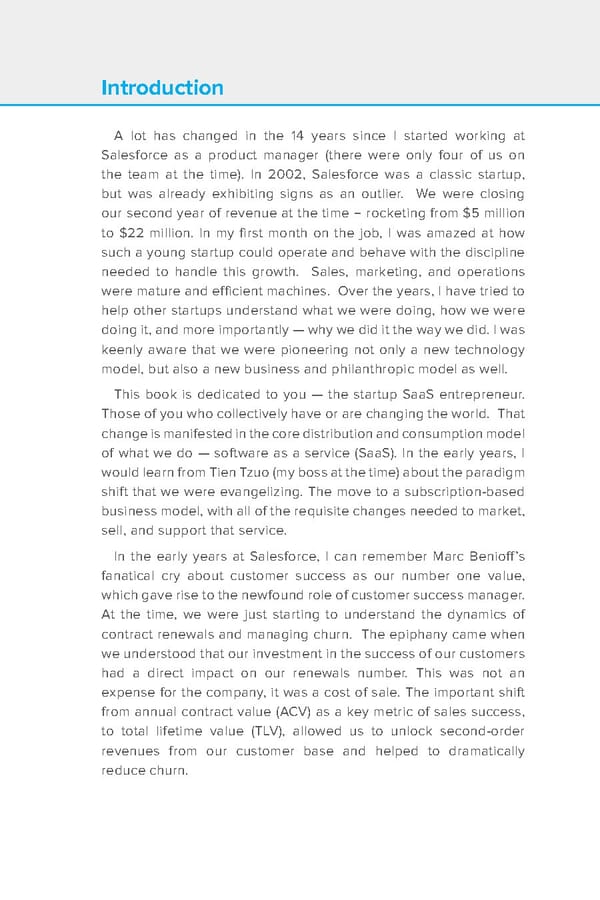AcknowledgmentsIntroduction A lot has changed in the 14 years since I started working at Salesforce as a product manager (there were only four of us on the team at the time). In 2002, Salesforce was a classic startup, but was already exhibiting signs as an outlier. We were closing our second year of revenue at the time − rocketing from $5 million to $22 million. In my first month on the job, I was amazed at how such a young startup could operate and behave with the discipline needed to handle this growth. Sales, marketing, and operations were mature and efficient machines. Over the years, I have tried to help other startups understand what we were doing, how we were doing it, and more importantly — why we did it the way we did. I was keenly aware that we were pioneering not only a new technology model, but also a new business and philanthropic model as well. This book is dedicated to you — the startup SaaS entrepreneur. Those of you who collectively have or are changing the world. That change is manifested in the core distribution and consumption model of what we do — software as a service (SaaS). In the early years, I would learn from Tien Tzuo (my boss at the time) about the paradigm shift that we were evangelizing. The move to a subscription-based business model, with all of the requisite changes needed to market, sell, and support that service. In the early years at Salesforce, I can remember Marc Benioff’s fanatical cry about customer success as our number one value, which gave rise to the newfound role of customer success manager. At the time, we were just starting to understand the dynamics of contract renewals and managing churn. The epiphany came when we understood that our investment in the success of our customers had a direct impact on our renewals number. This was not an expense for the company, it was a cost of sale. The important shift from annual contract value (ACV) as a key metric of sales success, to total lifetime value (TLV), allowed us to unlock second-order revenues from our customer base and helped to dramatically reduce churn.
 Acknowledgments & Introduction Page 4 Page 6
Acknowledgments & Introduction Page 4 Page 6